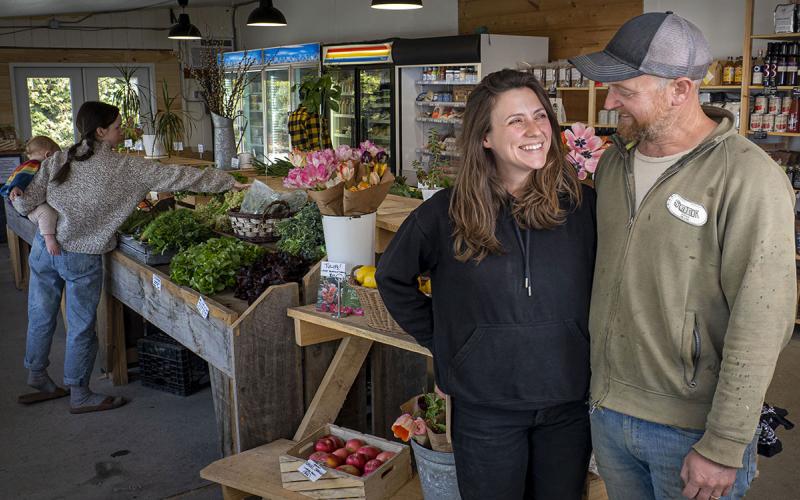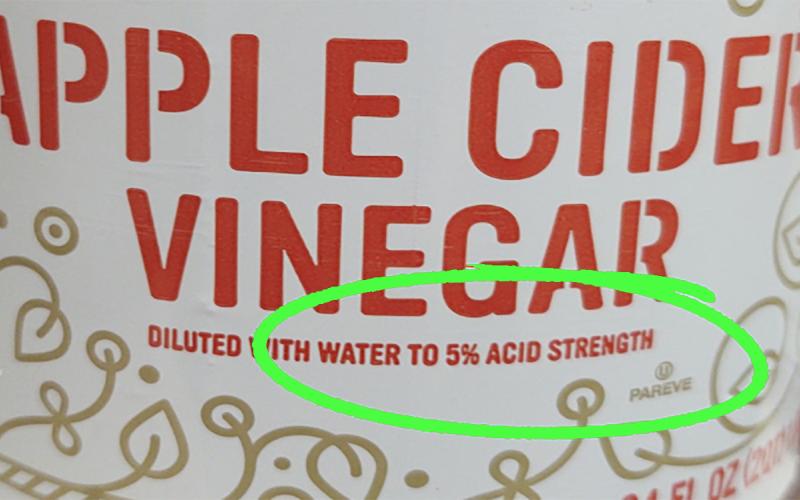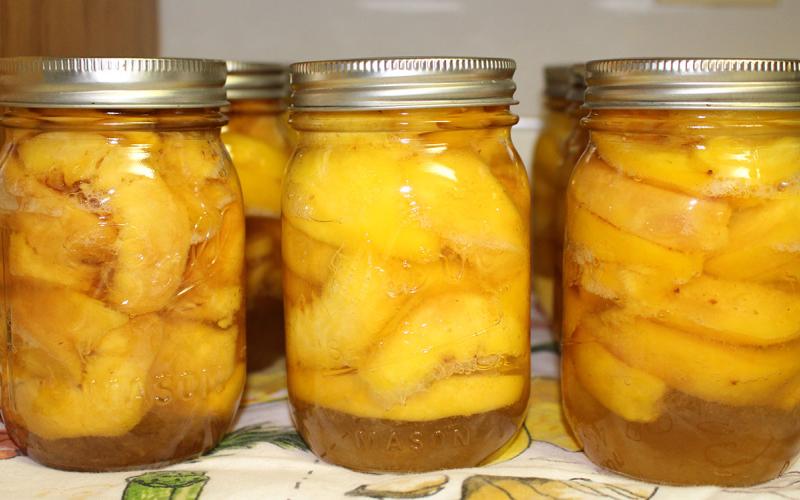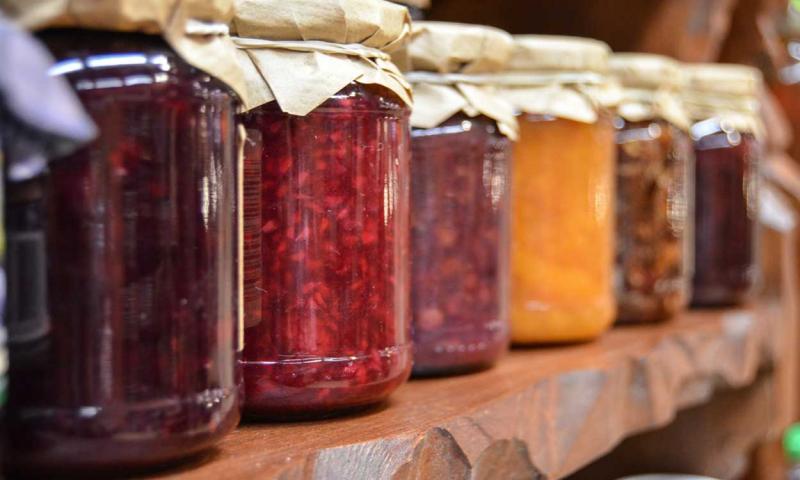
Written by Abigail Lambert under the direction and review of Megan Erickson, former SDSU Extension Nutrition Field Specialist.
About Jams and Jellies
Sweet fruit products like jelly, jam, preserves, conserves and marmalades are jellied or thickened and preserved by sugar. The differences between the fruit products are categorized by the way they are prepared, proportions of fruit, pectin, acid and sugar in the mixture and the method of cooking.
- Jelly is prepared by cooking fruit juice and sugar. Jelly is firmer than jam.
- Jam is thicker than jelly and is prepared by cooking crushed or chopped fruit and sugar. Jam will hold its shape.
- Preserves are small, uniform pieces of fruit in a clear gelled syrup.
- Conserves are jam-like but are made with a combination of fruits and include nuts, raisins or coconut.
- Marmalades are soft fruit jellies that contain little pieces of fruit, usually a citrus fruit.
Components of Jams and Jellies
Fruit
Fruit is the source of flavor, color, acid and pectin for jams and jellies. Fruit products can be made from one fruit or a combination of fruits.
Pectin
Pectin is a substance that acts as a setting agent in jams and jellies when it is combined with acid and sugar. Mixing the correct ratio of fruit, pectin, acid and sugar is critical to the outcome of your jam or jelly. All fruits contain some amount of pectin, but some contain more than others. The amount of pectin in a fruit also varies based on the ripeness of the produce. If a fruit is low in pectin, liquid or powdered pectin may need to be added to achieve the correct consistency.
AcidIty
Acidity is another variable that effects gel formation. If there is too little acid, the product will not set, if there is too much acid, the gel will lose liquid. Acidic ingredients, like lemon juice, are added to fruits low in acid.
Sugar
In jams and jellies, sugar preserves the fruit, provides flavor, and helps with gel formation. Cane or beet sugars are best for jams and jellies. Sugar also acts as a preservative which helps prevent the growth of microorganisms.
For a reduced sugar jam or jelly, concentrated fruit pulp and modified pectin are used. Reduced sugar recipes must be processed longer to prevent spoilage and may not have as long of a shelf life as full sugar jams and jellies.
Methods to Making Jams and Jellies
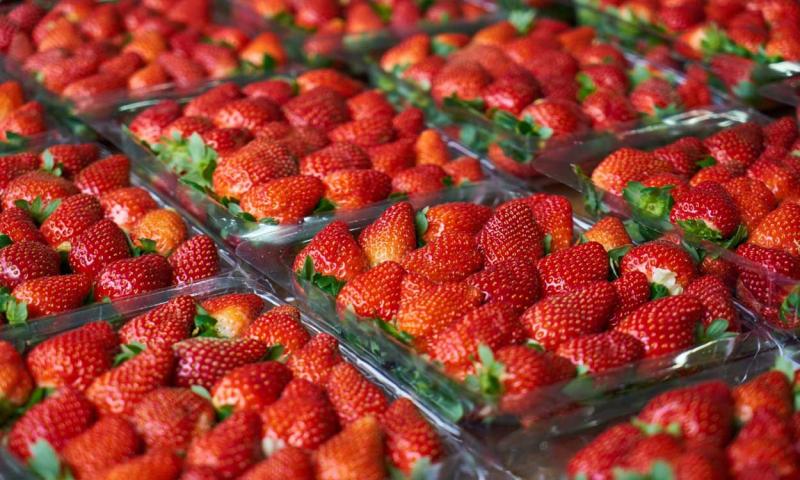
Jams and jellies can be made using two methods: no added pectin and added pectin.
No added Pectin
Jams are made with fully ripe fruit with naturally high levels of pectin while jellies are made with ¼ under ripe and ¾ ripe. For jellies, cooking the peels and cores with the fruit will add pectin and increase jelly firmness.
Added Pectin
Jellies or jams made with either liquid or powdered pectin requires less cooking and typically result in a strong, natural fruit flavor. The combination of ingredients depends on the type of pectin used. It’s important to follow the directions for different fruits provided with the packaged pectin.
Freezer Jams
Freezer jams are an option that requires little equipment, time and no cooking. It is recommended to use a commercial pectin which includes recipes for freezer jam. Follow an evidence-based recipe and do not reduce sugar. Some recipes may require jam to stand at room temperature for 24 hours while others will instruct you to freeze right after jam is made.
Processing
Regardless of whether you use a jelly or jam recipe with added pectin or no added pectin, all jams and jellies must be processed in a water bath canner – with the exception of some reduced sugar fruit products. Find more information on water bath canning in SDSU Extension’s Guide To Water Bath Canning. Remember to adjust the processing time to your altitude. Find more information on adjusting altitude in the article, Altitude Adjustments for Home Canning.
Once processing is complete, make sure the seal is secured properly. To do this, press down in the middle of the lid with a finger. If the lid pops back up when the finger is lifted, the jar is not sealed. Using the bottom of a tablespoon, tap the lid. A high pitch sound signals the jar is sealed. If not sealed properly, a dull sound will be produced. If jars are found with improper seals, they can be reprocessed up to 24 hours past their original processing time. Simply replace the original lid with a new lid and reprocess.
For best quality, jams and jellies should be used within a year. After opening, store in the refrigerator for up to one month.
Troubleshooting
After opening, store in the refrigerator for up to one month. Sometimes jams and jellies can go awry. Below are just a few conditions that may happen. More problems and their solutions can be found on the National Center for Home Food Preservation website.
- Formation of crystals: May be caused by excess sugar and undissolved sugar sticking to side of saucepot. To prevent crystals from forming, use a tested recipe and dissolve all sugar as jelly cooks. Cooling the mixture too slowly or for too long may also result in crystals. To prevent this, remove the mixture from the heat once the jelly point is reached and make small batches at a time.
- Product is too soft: May be caused by overcooking fruit to extract juice, incorrect proportions of sugar and juice, or insufficient acid. To prevent these things from happening, avoid overcooking as it lowers the jellying capacity of pectin and follow the recommended sugar, juice and acid proportions of your recipe.
- Product is too tough: May be caused by overcooking, too much pectin in fruit or too little sugar. To prevent this cook jelly mixture to a temperature 8 degrees higher than the boiling point of water or until it “sheets” from a spoon, use ripe fruit and decrease the amount of fruit if using added pectin, and when pectin isn’t added use ¾ cup sugar to 1 cup juice for most fruits.
- Presence of bubbles: May be caused by trapped air or may denote spoilage if bubbles are moving. To prevent this, remove foam from jelly or jam and ladle quickly into jars. Follow recommended methods for applying lids and processing.
To learn more about canning Jams & Jellies, watch our Troubleshooting Jams & Jellies video!
